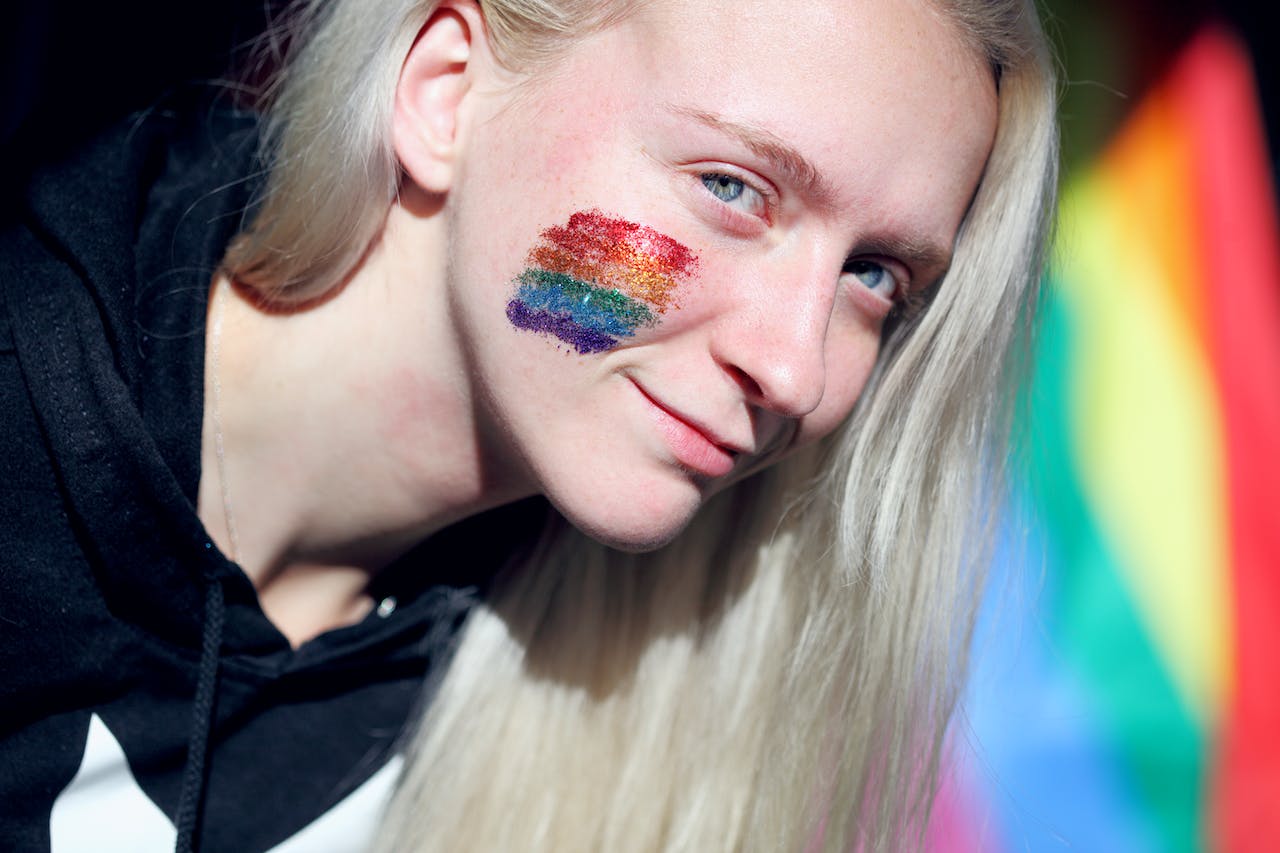Science
Green Glow, Anti-Tail, and X-Rays: The Comet 3I/ATLAS Breaks All the Rules
03 January 2026

In a world with widespread access to nearly unlimited knowledge and information, as well as advanced medical care, one might expect eudaimonia (complete well-being, physical and mental health) to be more achievable than ever. Yet since the inception of mental health statistics, we find ourselves in the greatest downturn of psycho-physical condition in history. When the system is ill, the weakest link suffers the most, and in the case of society, these are the children.
The topic of gender identification and sexual minority issues is extremely challenging. These matters elicit strong emotions, and increasingly, political correctness is replacing tolerance and respect as the norm. Of course, when discussing any form of suffering, including, or perhaps especially mental anguish, it is crucial to maintain sensitivity and gentleness. However, it seems that in some areas we have reached a kind of impasse where the subject has been reduced to the absurd.
The concept of gender in biological terms is a category referring to the structure, behaviors and systems that allow for the classification of an individual as male or female in animals, or as a woman or man. Genetic determination of biological sex occurs at the level of fertilization, involving the random selection of chromosomes resulting from the combination of the parents’ chromosome pairs (XX for female, XY for male).
The zygote, formed from the combination of maternal and paternal gametes, develops in a specific way consistent with the sex determination system. This allows the sex of the child to be ascertained by ultrasonographic examination (USG) as early as the 18th week of pregnancy.
Commonly, sex determination is based on observable characteristics. Primary characteristics include the presence of XX or XY chromosomes and the resulting development of internal and external organs and pathways (male and female urethra). Secondary characteristics involve differences in somatic structure: the skeleton, muscles, larynx, and hair patterns, which develop under the influence of the hormonal system.
Tertiary sexual characteristics, shaped by the body’s internal interactions, become pronounced during puberty (voice pitch, hair distribution). There are also quaternary characteristics, which are conditioned by cultural and civilizational factors.
Gender, a term distinguishing itself from biological sex, denotes the cultural component of gender identity. It encompasses non-biological factors that lead an individual to identify as a man or a woman. In other words, it is the socio-cultural conditioning of gender identity, expressed through cultural expectations and social pressures regarding specific ways of dressing, behaving, or undertaking social roles.
Currently, the word gender provokes strong emotions in both conservative and liberal circles. Groups advocating for a so-called traditional family model often use the term ‘gender ideology,’ attributing a pejorative meaning to it as a top-down and imposed worldview which threatens the natural order. In response, liberal environments counter with accusations of sexism, backwardness, or gender-based discrimination.
However, the concept of gender was developed to describe and study the non-biological influence on the determination of gender identity. Every culture and society exerts pressure on its members to adopt certain roles. Sometimes, due to a lack of knowledge, ignorance, or outright malice, people rely on stereotypes about a particular gender, leading to entrenched societal discrimination. This manifests itself in various forms, including lower earnings, limited access to education and professional development, or the toleration of sexual aggression against women.
We recommend:
A significant shift in the perception and treatment of gender-related difficulties occurred in 2013 with the introduction of the new American psychiatric classification, DSM-5. This replaced the previous term ‘gender identity disorder’ with ‘gender dysphoria,’ aiming to reduce stigma and the perception of individuals suffering from a disorder.
Psychiatry and psychology have since developed standards and methods for managing gender dysphoria, whose predominant symptom is a mismatch between gender identity and the sex assigned at birth. Therapy involves supporting a change in gender expression through hormonal therapy (to prevent the development of secondary sexual characteristics) and surgical gender reassignment. For FtM (female to male) individuals, this includes mastectomy, panhysterectomy (removal of the uterus), and the creation of a penis from the clitoris, and a scrotum from the labia majora (for a silicone testicular prosthesis). For MtF (male to female) individuals, this involves the removal of male gonads (testes) and the creation of a vagina (either shallow or deep, depending on the method used).
Currently, both psychotherapists and psychiatrists are observing a significant increase in patients presenting various issues in the area of gender identification. A thorough and properly conducted interview allows for the dismissal of the gender dysphoria hypothesis in the vast majority of cases (actual prevalence does not exceed 0.014% of the population). This highlights the immense responsibility of doctors and therapists and, in the case of a misdiagnosis, the potential for causing great harm to patients, who often seek medical help as children.
What, then, accounts for the substantial rise in cases of non-binary identities, transvestism, or interest in gender reassignment surgeries? One hypothesis that needs to be posed and rigorously examined is the increased openness of society to diversity. Young people born in 2000 and later, especially those living in large cities, largely no longer feel shame or guilt due to a different sexual orientation or gender expression than their biological sex. Potential causes may also include the influence of pop culture and fashion, which currently promotes more androgynous men and women (though this is not a new phenomenon, as evidenced by the likes of Bonnie Tyler wearing trousers and jackets in the 1980s and David Bowie performing in full makeup).
Another hypothesis relates to the adolescent need to express rebellion, which has always challenged established social norms as a means of asserting independence and achieving individuation. Activist groups demanding change are trustworthy and attractive to young people; hence, the LGBTQ individuals currently fighting for their rights provide an appropriate environment for young people to express their anger and dissatisfaction.
In a body comprising billions of cells, the potential for various aberrations is so vast that any case is possible. However, the problem arises when we, as adults, fail. From the very beginning, a child needs a key figure, often found in their mother. In the early years, they seek confirmation, acceptance, and positive reinforcement, impacting their self-worth. Lack of interest, devaluation, and in extreme cases, belittling and mockery, can cause a sense of loss, often leading to self-aggressive attitudes. It is widely recognized in the psychological and medical community that such difficulties can lead to personality disorders, depression, or anxiety.
Should we also consider the impact of upbringing and socialization on the development of various gender identity disorders? The excess of frustration experienced in childhood towards the mother as an object failing to meet basic needs can later transform into self-directed aggression. Could one of the symptoms be a partial rejection of oneself, self-deprecation, in this case, situated in the realm of gender identity? Is it possible that a boy who experienced violence from his father decides that he ‘will never be like him,’ which consequently leads him to reject himself as a man, not wanting to be an aggressive, strong object that incites fear and a sense of threat? Could a girl who experienced sexual abuse in childhood have difficulties accepting her sexual characteristics, which she believes attracted the perpetrator, thinking their removal would protect her from further harm?
This complex and not yet thoroughly researched topic requires in-depth analysis, numerous reliable studies, and discussions on authoritative results. Too hasty a diagnosis, subjective attitudes towards a case, or a narrow perspective can lead to suggestions for the patient that may be catastrophic in their consequences.
As the author of this article, and as an uncle, teacher, and therapist, I appeal to all interested parties—doctors, teachers, therapists—to educate ourselves and delve into the latest knowledge. Trust in scientific methods, but also in our intuition. Let us act in the best interest of our students or patients. Listen to and support our children. Be there for them. And I urge all opposing forces to stop exploiting children for their particular interests. Their harm is the most morally reprehensible. The youth are also our future. If we cause them to fall ill, the entire system will suffer. Who will take care of us when we are entirely dependent?
